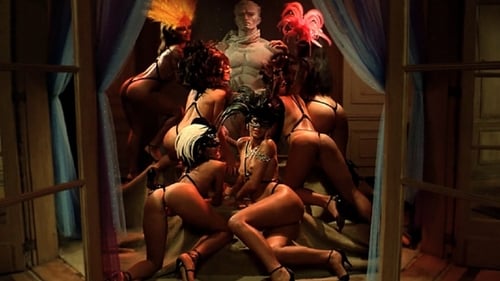
A directionless young man asks his nun sister to come with him visit his father.

Otoniel Serra
A documentary on the restoration of Rogério Sganzerla's 1970 film "Copacabana, Mon Amour".

Carola Brecker is a young writer in crisis. After leaving her husband Mickey, she is hired by the cultural gangster Al Gazarra to write 42 plays about the god Pan, to be staged by the excentric polish director Tadeusz Karkovski.

A couple lives isolated in a country house at th top of a hill, full of natural beauties. Their routine is changed when an unsual group of mannequins seems to gain life, and start to watch over them.

A public relations man is invited to guide an American millionaire during his stay in Rio de Janeiro. He gets involved in the most bizarre situations, from orgiastic mega-parties to confrontations with the police, meetings with drug dealers and movie stars, facing corruption and even murder.

Tony
During the Carnival, in Niterói, the son of a Lira do Delírio nightclub dancer is kidnapped. With the help of a journalist friend, she dives into Rio de Janeiro's underworld and meet all kind of criminals. She also goes back in time, to a past carnival, where she thinks she might pin-point the culprit among a group of people.

Vidimar
Sônia and her homosexual brother are both believed by their mother to be possessed by the devil. She works as a prostitute in the streets of Copacabana and he’s a servant who falls madly in love with his employer.

Bressane’s first color film, shot in the home of the artist Elyseu Visconti. Part of it is missing sound and final editing because the director was forced to leave Brazil. Horror and humor to deal with the subject of insanity: “In the end everyone leaves the house as though they were laboratory mice escaping, they invade the city and contaminate the world”. “If we talk about horror, this film deals with national horror, with Mojica Marins as an emblem. There might be a few touches of Corman and English horror, but it is another level of horror. What transformed the film was the location where we were shooting, the house of a 19th century painter, a receptacle of light. When I arrived and saw that house, that light, I said: ‘This is the film. This is the horror’. The meaning of the film, its appeal, derives from this laboratory of light” (J. Bressane). — Torino Film Festival

Wealthy banker Antônio witnesses the murder of a journalist, who got killed for exposing the activities of a gang of smugglers. After they find out about him, Antônio and his wife are both targeted and pursued by the criminals.

Servente da escola
Colonel Polidoro is the political chief of the small town of Passaroca. Near the city hall elections, he decides to help his candidate by setting up an adult literacy course. For this, he needs to find a competent teacher and decides to go to Rio de Janeiro with this function. False moralist that is, ends up falling in the revelry, meets a beautiful dancer and invites the girl to spend the carnival on his farm. Drunk, he confuses the addresses and causes his driver to take the dancer in place of the teacher to Passaroca, which will cause a lot of confusion.








